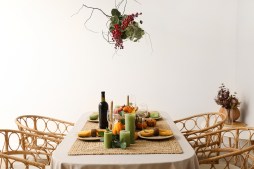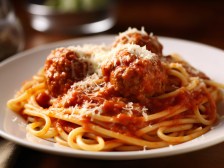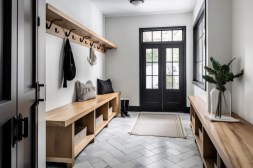The Ultimate Guide to Harmonizing Food Presentation with Table Design
A beautifully set table can enhance your dining experience immensely, creating an atmosphere that complements both the food and the occasion. In this guide, we will explore how to choose table settings that harmonize with your culinary creations and overall theme, ensuring a feast for not just the palate but also the eyes.
Understanding Your Theme
Before you begin selecting table settings, it’s crucial to define the theme of your event. Whether it’s a casual family gathering, an elegant wedding reception, or a festive holiday dinner, understanding your theme provides a foundation for all design choices. Consider colors, styles (rustic vs. modern), and even cultural influences that should resonate throughout your table decor.

Choosing Tableware That Reflects Your Cuisine
Your choice of tableware plays a significant role in reinforcing the theme and enhancing the culinary experience. For instance, if you’re serving Italian cuisine, consider using warm-colored plates with ornate designs that reflect Mediterranean aesthetics. Conversely, modern Asian dishes might be beautifully complemented by simple white or black plates that allow vibrant food colors to shine through.
Incorporating Centerpieces and Accents
Centerpieces serve as focal points on a dining table and should align with both your food presentation and overall theme. For example, fresh flowers in rustic arrangements work well for garden parties while sleek glass vases filled with succulents suit minimalist themes. Additionally, think about accents like napkin rings or placemats; these small details can tie together your color scheme while adding depth to the setting.
Lighting: Setting The Mood
Lighting dramatically affects how food is presented on the table; thus it deserves careful consideration. Soft lighting creates an inviting ambiance for intimate gatherings while brighter lights may be more suitable for buffets or casual meals where guests mingle freely. Candles are excellent for adding warmth during evening events—opt for unscented ones so as not to distract from meal aromas.
Final Touches That Make A Difference
Don’t overlook final touches such as place cards or personalized menus that offer guests insight into what they’ll enjoy during their meal; this adds an element of thoughtfulness to your setting. Moreover, consider using unique utensils like chopsticks instead of traditional forks when serving Asian cuisine—such details can elevate both presentation and dining experience.
In conclusion, harmonizing food presentation with table design is essential in creating memorable dining experiences. By carefully considering elements like theme definitions and appropriate selections of dinnerware alongside thoughtful accents and lighting choices—you can ensure every meal feels special whether it’s a grand celebration or simply dinner at home.
This text was generated using a large language model, and select text has been reviewed and moderated for purposes such as readability.











